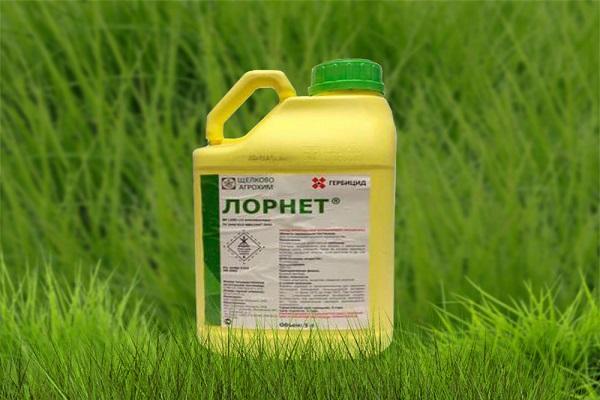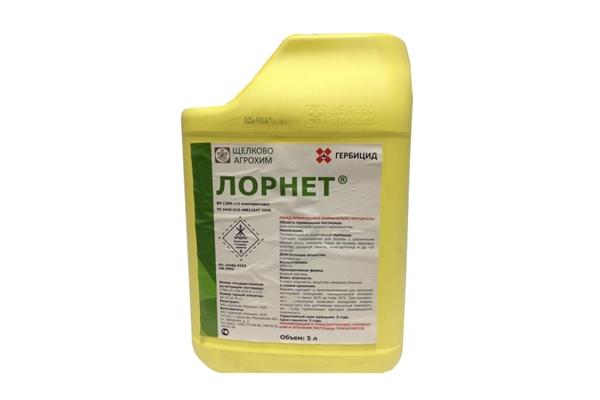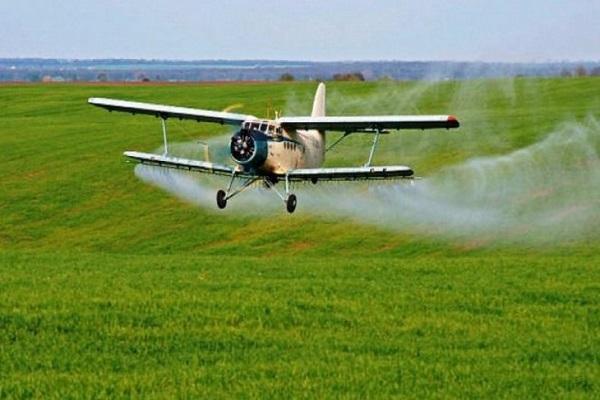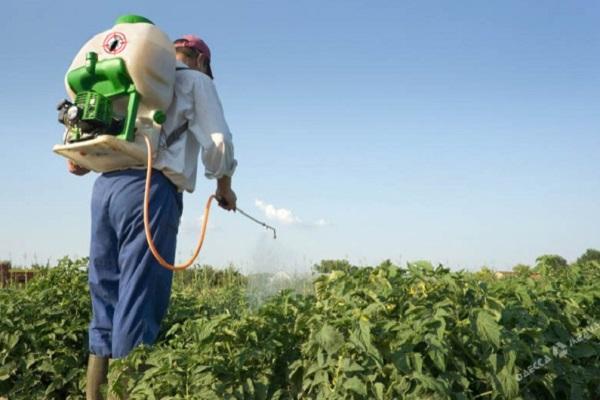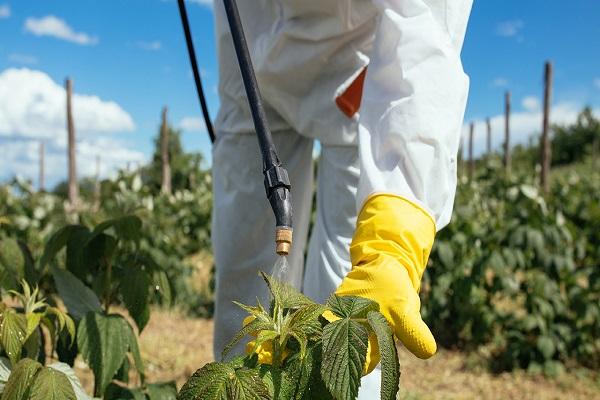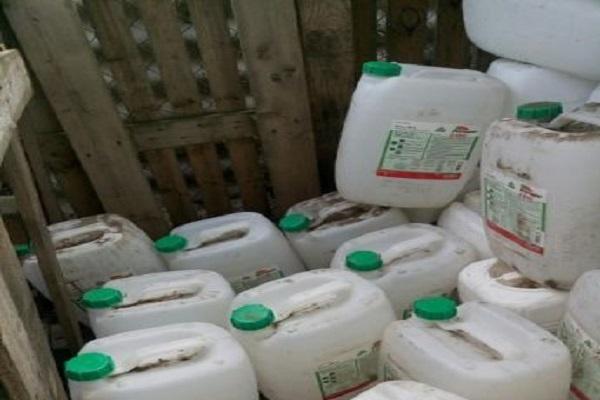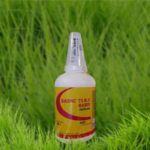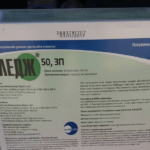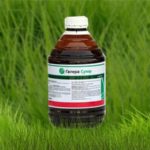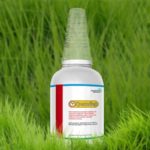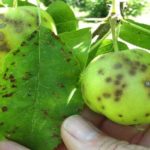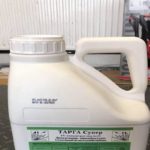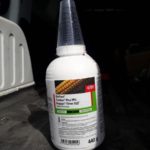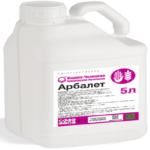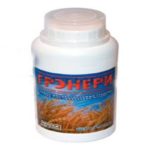Lornet is a systemic herbicide with selective activity that destroys annual and perennial dicotyledonous and cereal weeds. The drug is used for post-emergence treatment of grain crops, corn, and rapeseed. Lornette can be used for spraying sugar beets, strawberries (after picking berries), and lawns. The herbicide eliminates almost all weeds from the field in just one application.
- Composition, release form and purpose of the herbicide Lornet
- Mechanism of action of the drug
- Period of protective action
- Advantages of weed killer
- Consumption measures for different plants
- How to prepare and use the working mixture
- Toxicity and precautions
- Compatibility with other pesticides
- Transportation and storage conditions
- Analogs
Composition, release form and purpose of the herbicide Lornet
It is a herbicide with systemic and selective action. It is used to destroy annual and perennial dicotyledons, as well as cereal weeds. Helps cope with sow thistle, chamomile, knotweed, cornflower, ragweed, dandelion, shepherd's purse and other herbs. The herbicide is used on plantings of beets, grain crops, corn, rapeseed, and flax. Protects strawberries and lawns.
The active substance is clopyralid. The herbicide is in the form of an aqueous solution. The drug is produced by the Shchelkovo Agrokhim company. Lornette is sold in plastic canisters of 5 or 10 liters, as well as in ampoules of 3 or 50 milliliters. The herbicide can be used in large farms and small private farms. The drug is used for post-emergence single treatment.
Mechanism of action of the drug
The active substance (clopyralid) penetrates into weeds through leaves and roots. The herbicide affects the plant at the cellular level. A few hours after treatment, the weeds stop growing. After 4-7 days, the first visible signs of the action of the herbicide appear (withering, necrosis, chlorosis). The weeds die completely within 1-2 weeks.
Period of protective action
The herbicide protects the main crop from weeds for the entire growing season. Only one treatment with this drug will be required per season. The herbicide exhibits maximum effectiveness when applied at a temperature of 10 to 25 degrees Celsius on the leaves of young weeds.
Advantages of weed killer
Advantages of Lornet:
- destroys the above-ground and root systems of weeds;
- differs in selective activity;
- protects the main crop from the growth of weeds for the entire season;
- compatible with other pesticides.
Consumption measures for different plants
The herbicide Lornet is taken in the following proportions (in private farms):
- For irrigation of strawberries against annual and perennial dicotyledons: 3 ml per 3 liters of water. The working fluid consumption is 3 liters per 50 square meters. Spraying of weeds is carried out after picking berries.
- For treating the lawn against annual and perennial dicotyledons: 1.5 ml or 6 ml per 5 liters of water. Weeds are sprayed after the first mowing. The working fluid consumption is 5 liters per 100 square meters.
Consumption rate in large farms (with a working fluid consumption of 200-300 l/ha):
- For grains: 0.16-0.66 l/ha.
- For beets: 0.3-0.5 l/ha.
- For flax: 0.1-0.3 l/ha.
- For corn: 1 l/ha.
- For rapeseed: 0.3-0.4 l/ha.
- For sports lawns: 0.16-0.66 l/ha.
How to prepare and use the working mixture
According to the instructions, Lornet herbicide is prepared on the day of use. On private farms, the working mixture can be prepared in a plastic bucket and then poured into a sprayer.
Large farms use tractor-mounted fine sprayers to process the fields.
The tank is half filled with clean, free water, and then the herbicide is added with the mixer turned on. Then add the required amount of water. The diluted herbicide is used after germination of the main crop (in the phase of 2-4 leaves). Weeds are treated at the very beginning of growth.
Toxicity and precautions
Lornette belongs to hazard class 3.The drug, under favorable conditions (no precipitation, temperature - 20-25 degrees Celsius), retains its activity for a long time. It decomposes in the soil within 2-12 months. The drug does not decompose in plants; its microdoses are found in cultivated species.
The herbicide has selective activity and acts only on weeds. The drug is non-toxic for animals, fish, birds, insects. It is not recommended to cultivate the field during the active summer of bees.
When working with this herbicide, you need to wear a protective suit, respirator, boots and gloves. After field work, you need to wash your hands and face with soap and rinse your mouth with soda solution.
Compatibility with other pesticides
Lornette can be used in conjunction with herbicides of the betarene series and anti-cereal pesticides (Forward). The herbicide is used in mixtures with preparations based on desmedipham, 2,4-D, and fluazifop-R-butyl. Combined use allows you to increase the spectrum of activity and reduce the dosage of Lornet.
Transportation and storage conditions
Lornet herbicide is transported on transport specially designed for the transport of pesticides. It is prohibited to transport food, goods or passengers together with herbicides.
Pesticides must be stored in specially equipped warehouses that meet sanitary and fire safety standards. The herbicide should be stored in tightly closed original packaging. The herbicide must be used before the expiration date, that is, 3 years after the date of manufacture.
The working mixture is prepared on the day of irrigation, and after application, the residues are poured outside the agricultural land.
Analogs
There are many drugs on sale with a similar composition.For example, Alpha Pyralid, Bris, Galera, Ilion, Corrector, Longan, Megalith, Rapsan, Skipper and others. These herbicides contain clopyralid. The drugs are used to combat chamomile, thistle, knotweed, and thistle.
Herbicides based on clopyralid have systemic and selective activity. Each of the drugs protects the main crop and fights dicotyledonous and cereal weeds.

